Eyelid Surgery (Blepharoplasty)
The following information sheet is intended to assist patients undergoing eyelid surgery ( also known as Blepharoplasty) with Dr Nicholas Lotz.
Jump to:
-
Patient Information
Fact Sheet
-
Tags
Eyelid Surgery (Blepharoplasty)
The effects of aging are seen around the eyes as well as in the face. This results in an excess of skin in the eyelids, which can impede the opening of the eyes and give the eyes a sad or tired appearance. The bulging of fat in the lower eyelids can also give them a puffy look.
A blepharoplasty removes the excess skin, muscle and fat of the eyelids using incisions that are hidden within the natural skin creases.
This will give the eyes a more open look, as well as helping to improve your vision in many cases. This procedure is often combined with a brow lift or a facelift.
Upper blepharoplasty – corrective surgery to improve vision
Frequently the upper eyelid skin excess can obstruct and reduce your visual fields (your side vision), in which case there is a Medicare item number applicable. This will mean that if you are in a health fund it will possibly cover some of the surgery costs. During your consultation Dr Lotz will advise if this is applicable to you, and we can then tell you how much of the surgery costs will be covered by your health fund.
Before the
surgery
During your initial consultation, Dr Lotz will spend time with you discussing exactly what your concerns are. All patients have slightly different requirements, and will require surgery to be tailored to their needs. Dr Lotz will explain in detail what is required in your case, and the relevant risks and expected recovery will be discussed.
You will be shown photographs of other patients who have undergone similar brow lift surgery, so you have an idea what to expect with respect to results.
You will be sent an information pack further explaining the procedure, along with a detailed, personalised quotation which explains all the relevant costs pertaining to the procedure as well and any heath fund or Medicare rebates applicable.
It is important that you stop any blood thinning medications at least 10 days prior to surgery in order to reduce the risk of bleeding.
You should also cease smoking a month before and a month after your surgery to reduce the risk of skin healing problems.
You will have a second consultation a week or two prior to your surgery to answer any final questions you may have, and photographs will be taken to aid planning your surgery.
The surgery
Upper Blepharoplasty
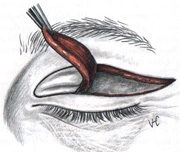
1a. Upper Blepharoplasty - skin excision
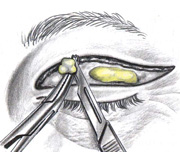
1b. Upper Blepharoplasty - fat removal
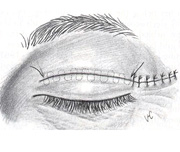
1c. Upper Blepharoplasty - finished scar hidden in eyelid crease
The procedure is usually performed under a general anaesthetic as a day stay hospital procedure in an accredited hospital with a qualified and experienced anaesthetist.
Very occasionally, for blepharoplasty which only requires a very small amount of skin to be removed, the procedure can be done in the office under local anaesthetic.
Upper eyelid surgery takes one hour, and lower eyelid surgery about one-and-a-half hours. You can go home the same day but you will need someone to pick you up and care for you at least overnight.
Surgical procedure - Upper Blepharoplasty
In upper blepharoplasty, the incision line is hidden in the crease of the upper eyelid, and may extend out to the side of the eyelid where it is hidden in the wrinkles around the eyes. The excess skin is removed along with any excess muscle, and any excess fat can then be trimmed.
Lower Blepharoplasty
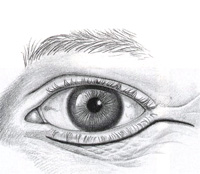
2a. Lower eyelid blepharoplasty - incision
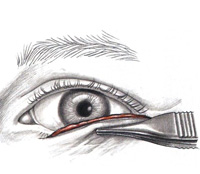
2b. Lower eyelid blepharoplasty - excess skin removal
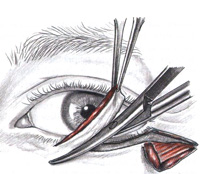
2c. Lower eyelid blepharoplasty - excess skin removal
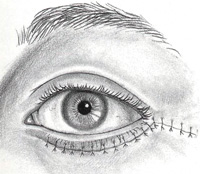
2d. Lower eyelid blepharoplasty - finished wound
Surgical procedure - Lower Blepharoplasty
A lower eyelid blepharoplasty is performed for patients who have bulging fat of the lower eyelids as well as loose skin. The preferred technique employed by Dr Lotz is to remove the excess fat through a small incision hidden inside the lower eyelid, which avoids any scar or disruption to the lower eyelid itself. If there is loose skin to be removed as well, then this is usually done through a separate incision hidden in one of the skin creases in the lower eyelid.
In some cases the surgery may all be done through an incision hidden just beneath the lower eyelid lashes. Frequently a lower eyelid tightening procedure will also need to be performed to prevent the lid wanting to fall down with the swelling in the recovery period.
After the surgery
Post-operative Recovery and Care
Many patients have very little in the way of swelling or bruising after surgery, but it is recommended that you allow 2 weeks for recovery. The swelling can be reduced by the use of cool compresses for 48 hours following the surgery, and by sleeping with the head elevated on 2 pillows at night.
You can shower normally from the day after the surgery, and you will be given some antibiotic ointment to apply to the suture line twice a day. You should avoid using your contact lenses for 2 weeks after the surgery, and avoid any heavy lifting or straining.
Most patients are surprised by just how comfortable the recovery following blepharoplasty can be. Panadol can be used to reduce discomfort if required. Patients may also use ice-soaked eye pads to help reduce any swelling after the procedure with soothing eye drops also available if needed.
Stitch Removal and Follow-Up
The stitches are removed 4 to 7 days later, and makeup may be worn from this time.
You will be seen for a final review 6 to 8 weeks following the surgery.
Risks of blepharoplasty surgery
- Infection and bleeding
- Dry, irritated eyes
- Difficulty closing your eyes or other eyelid problems
- Noticeable scarring
- Injury to eye muscles (causing double vision)
- Skin discoloration
- The need for a follow-up surgery if excess skin appears
- Temporarily blurred vision or, very rarely, loss of eyesight
- Pulling down of the lower eyelid (lower blepharoplasty only)
- Risks associated with surgery in general, including reaction to anaesthetic (nausea and vomiting being the most common) and blood clots in the legs
These risks will all be explained in detail to you during the consultation.
Before & After
Case Example: 1
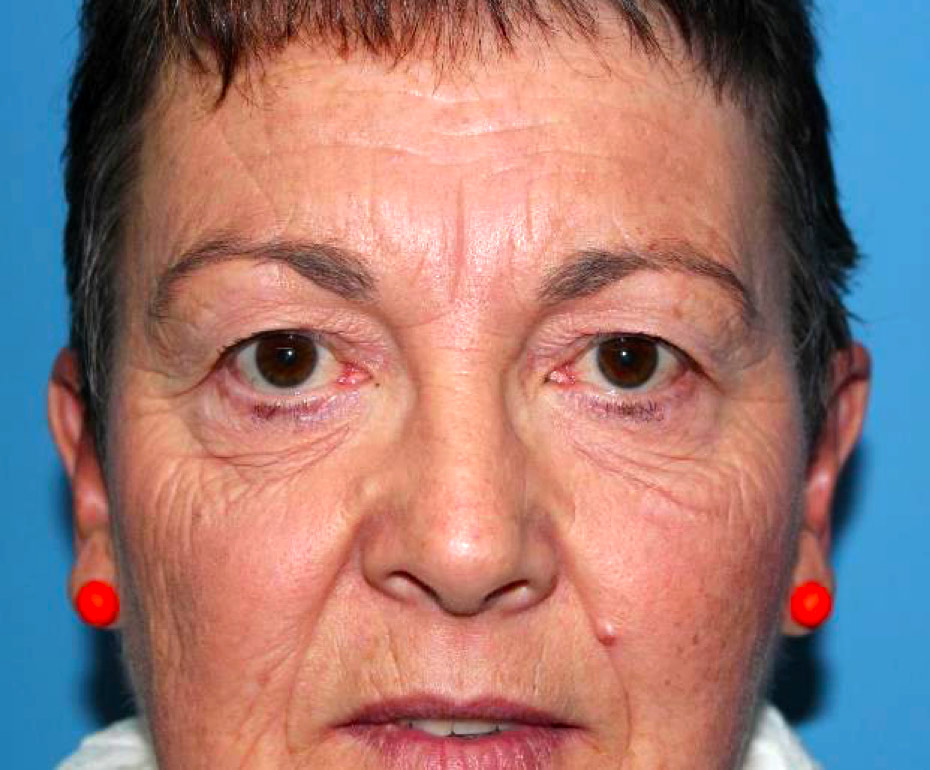
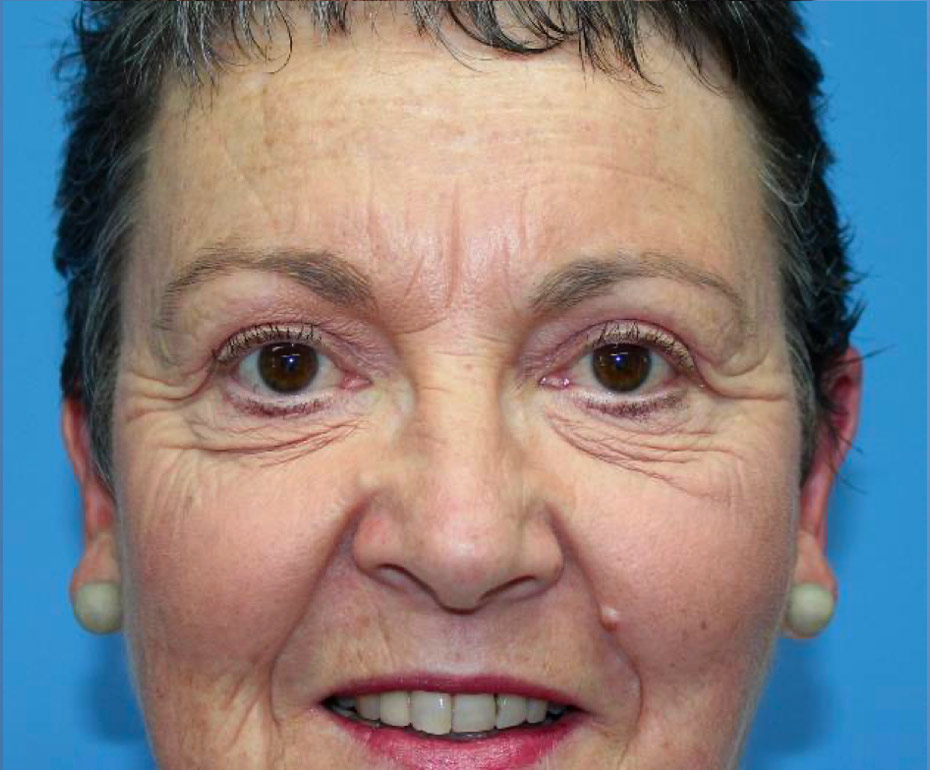
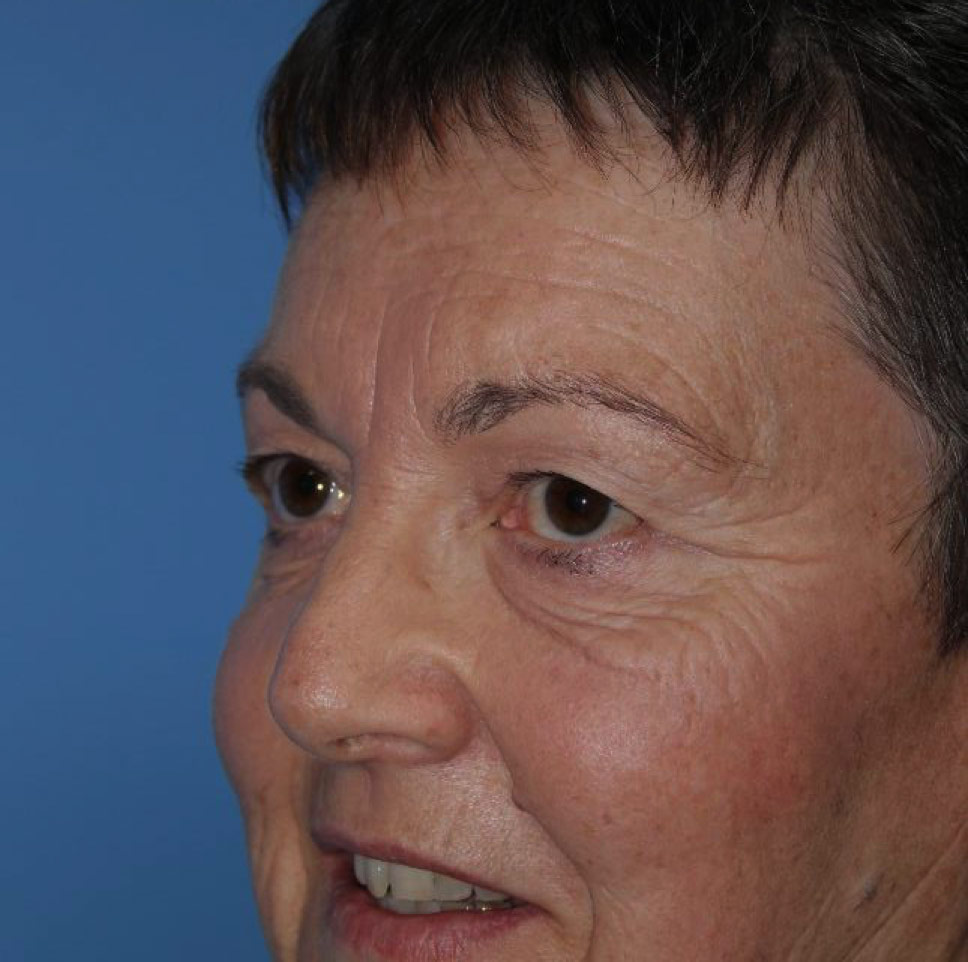
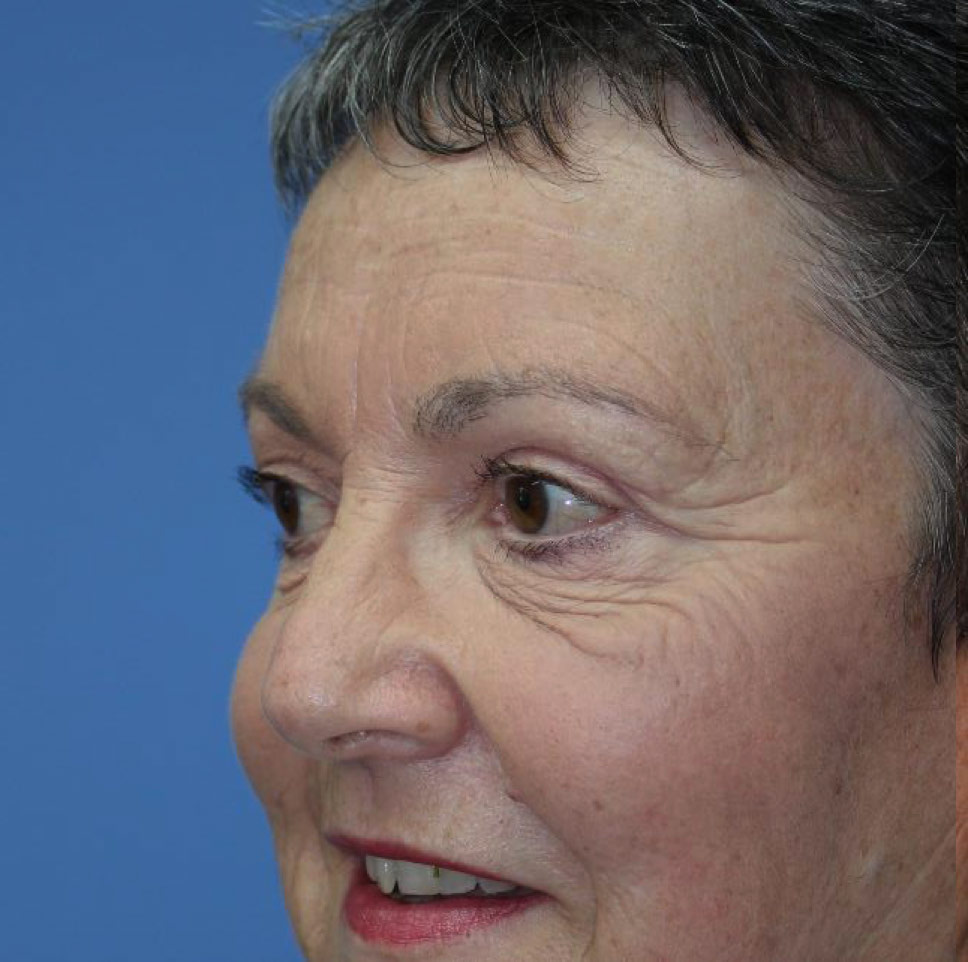
Case Example: 2
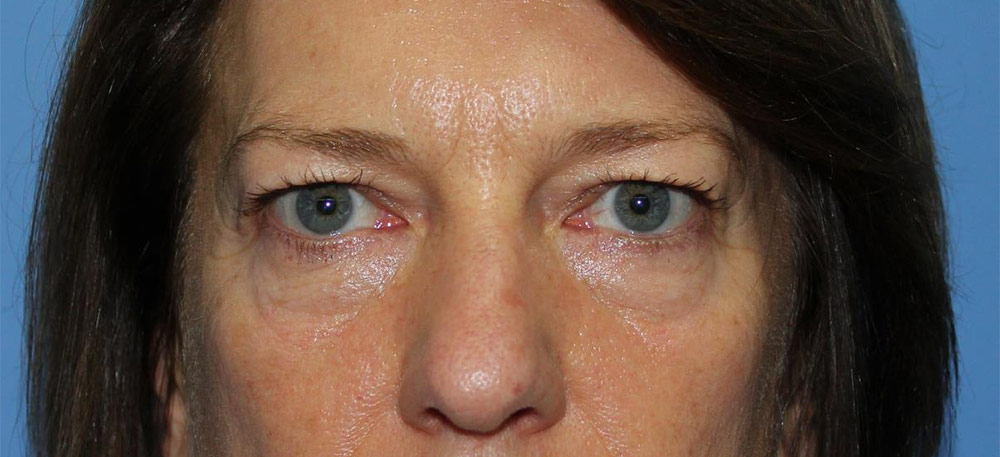
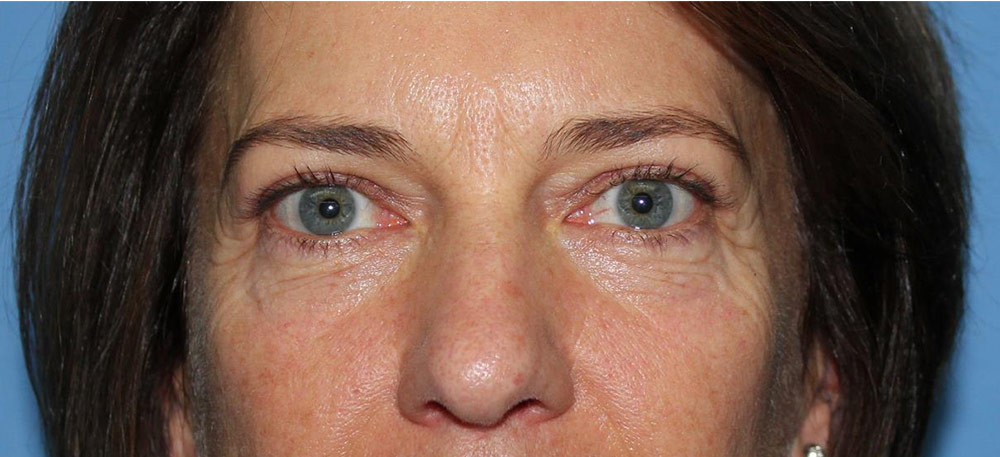
Case Example: 3
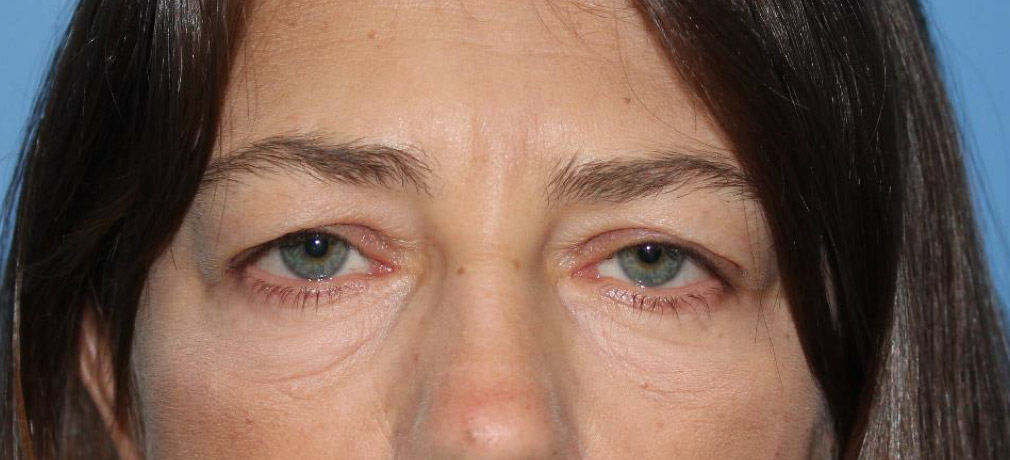
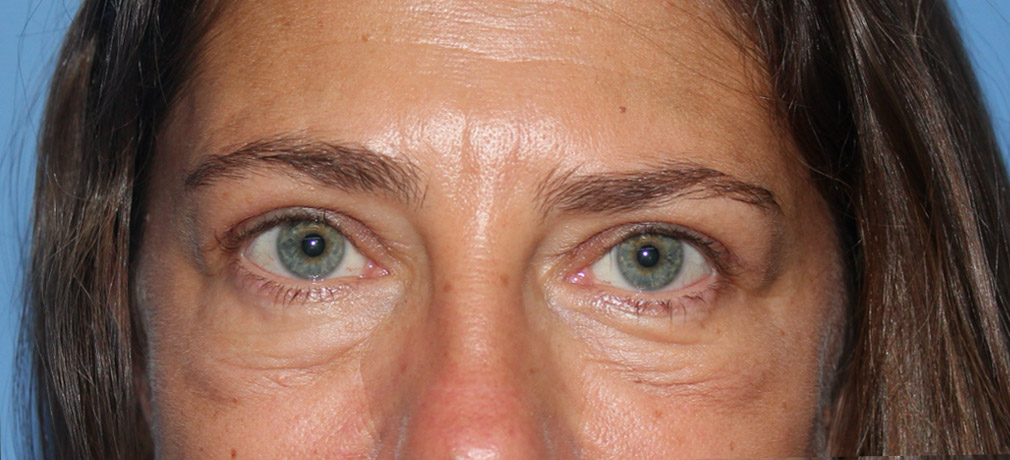
Case Example: 4
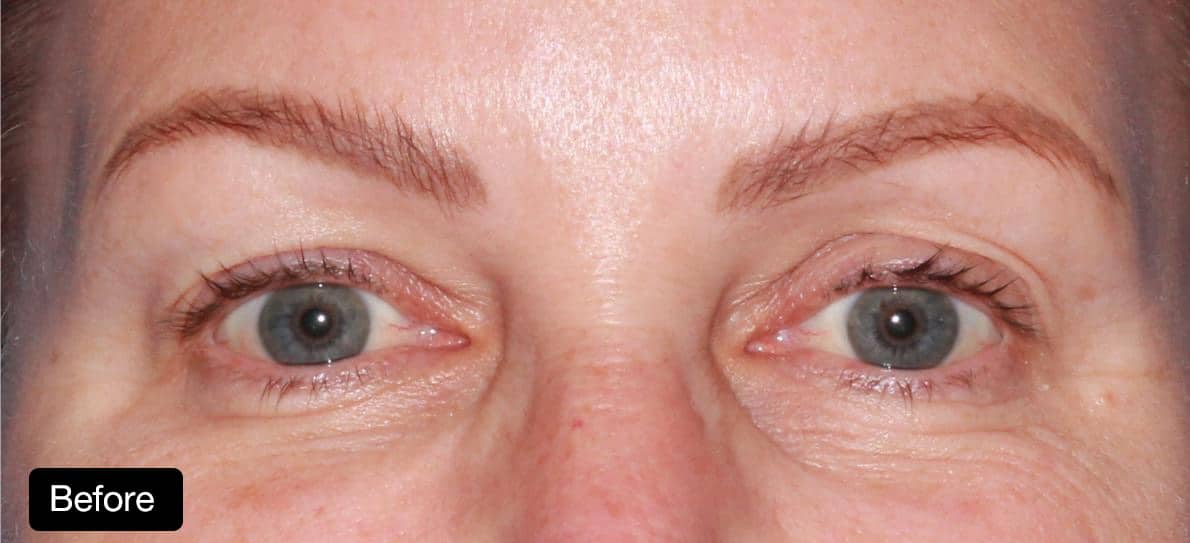
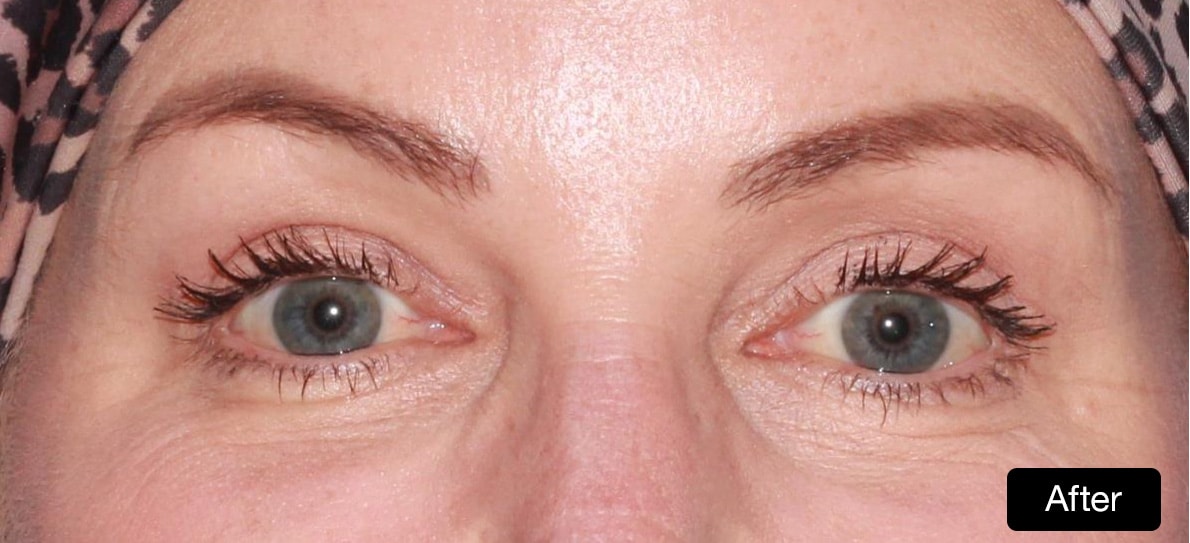
Case Example: 5
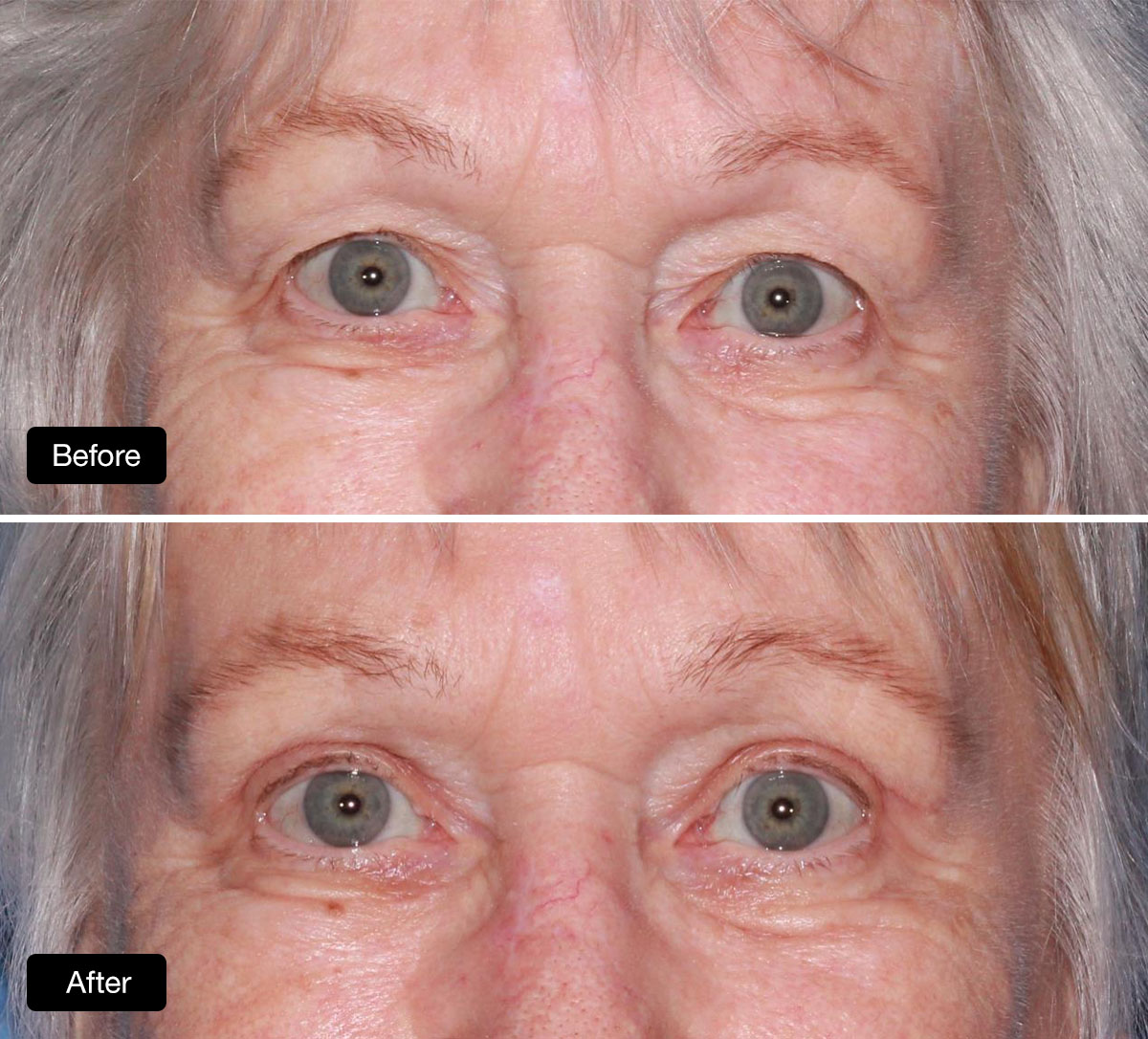
Upper blepharoplasty 81 year old patient before surgery and 6 weeks post surgery
Upper blepharoplasty 81 year old patient before surgery and 6 weeks post surgery
Frequently Asked Questions
Is there an ideal age for blepharoplasty or eyelid surgery?
The most common age for eyelid surgery / blepharoplasty is during the 40s and 50s, but people may require this procedure earlier if their eyelids are particularly heavy.
Where is eyelid surgery performed and do I need to stay in hospital??
Eyelid surgery is usually performed in hospital under general anaesthetic. Upper eyelid surgery takes one hour, and lower eyelid surgery about one-and-a-half hours. You can go home the same day but you will need someone to pick you up and care for you at least overnight.
How long does an eyelid surgery last?
Eyelid surgery should last at least 10 years, and is usually only needed once. In some patients, if the returning excess skin bothers them, then a blepharoplasty can be repeated.
Where will the scars for eyelid surgery be located?
The incisions are made in the natural crease of your eyelid and will gradually fade over time becoming barely visible.
How much does eyelid surgery cost?
The cost of upper eyelid surgery will depend on if your vision is affected enough to qualify for a Medicare item number. You will be given a referral to see an optometrist to check this prior to surgery, and you will be sent a detailed quotation which will cover the costs for Dr Lotz, the anaesthetist and any relevant hospital fees.
Lower eyelid surgery is never covered by your Health Fund as it is purely cosmetic.
Are there any Medicare rebates available for eyelid surgery?
There are possible Medicare rebates if your eyelid skin causes visual obstruction. This will be determined by an independent optometrist.
The Medicare item number is 45617 x 2.
Will I be able to wear my glasses and contact lenses after eyelid surgery?
Glasses can be worn immediately after surgery.
Contact lenses should be avoided for around 10-14 days.
When will I have my follow-up and will it be with Dr Lotz?
You will be seen by Dr Lotz within a week of your surgery. Regular appointments are made to remove sutures and to check on your healing following surgery.
Will this eyelid surgery procedure fix issues with my vision?
In cases where excess skin is reducing your visual field, then removing the skin can help improve your vision.
Will this procedure cause a lot of pain?
Most patients are surprised by just how comfortable the recovery following blepharoplasty can be. Panadol can be used to reduce discomfort if required. Patients may also use ice-soaked eye pads to help reduce any swelling after the procedure with soothing eye drops also available if needed. We do not bandage the eyes or occlude your vision.
What sort of recovery time will I require after eyelid surgery?
Most patients have only minimal bruising following eyelid surgery, but we advise to allow 2 weeks recovery to allow bruising to fully settle.
There may still be some swelling for up to 6 weeks after surgery.

